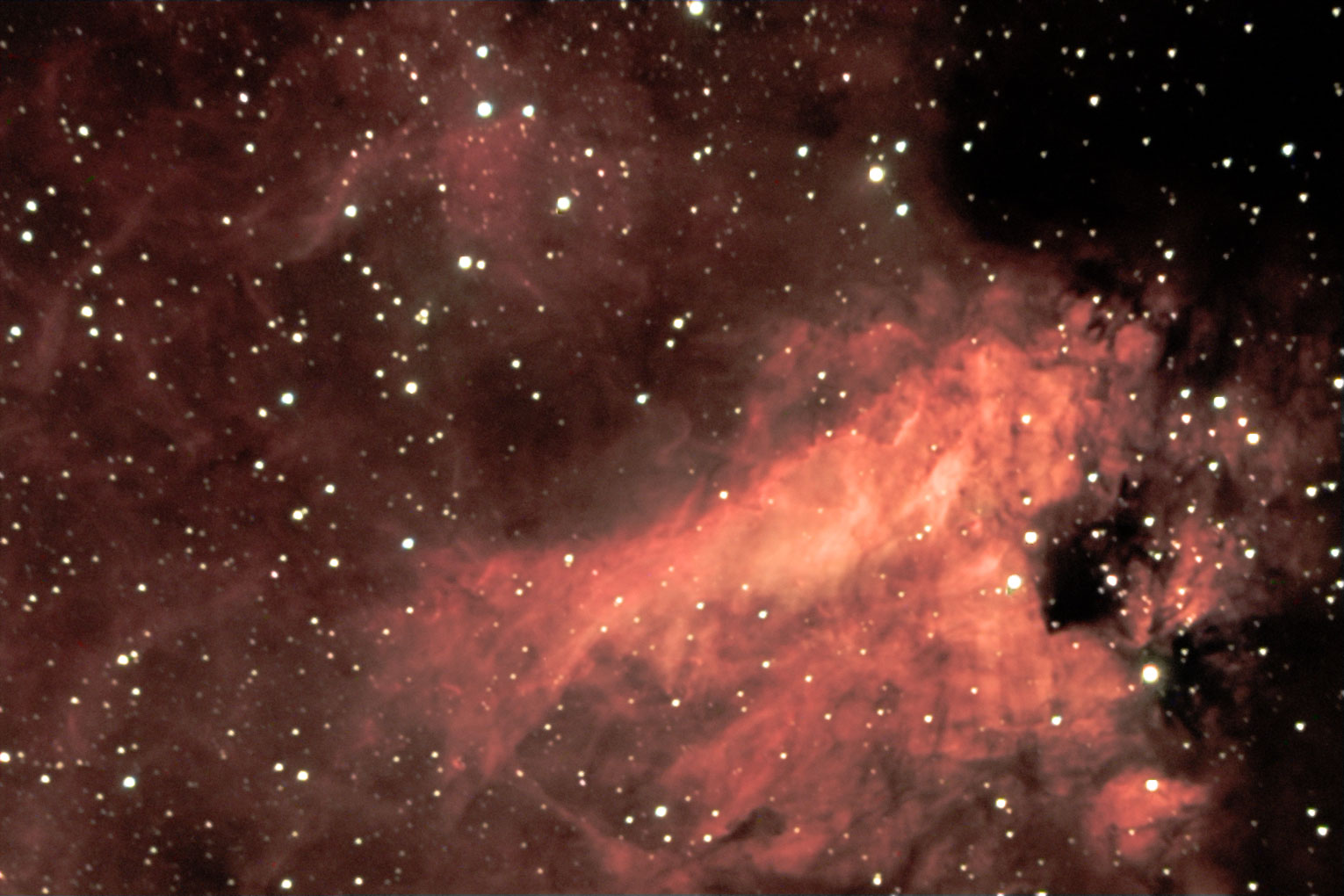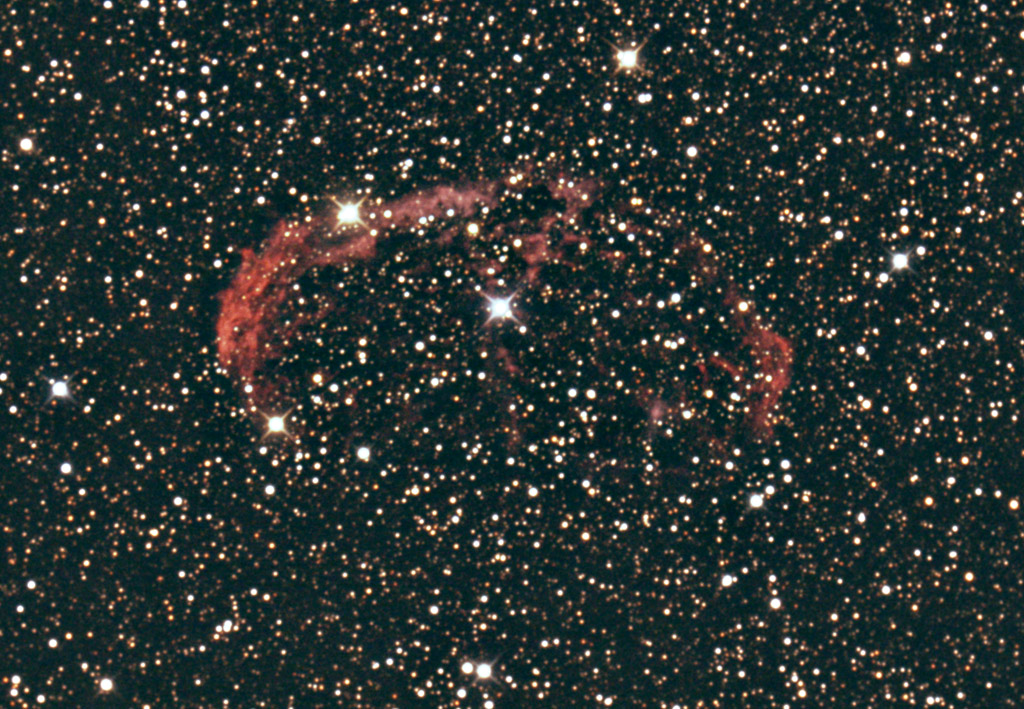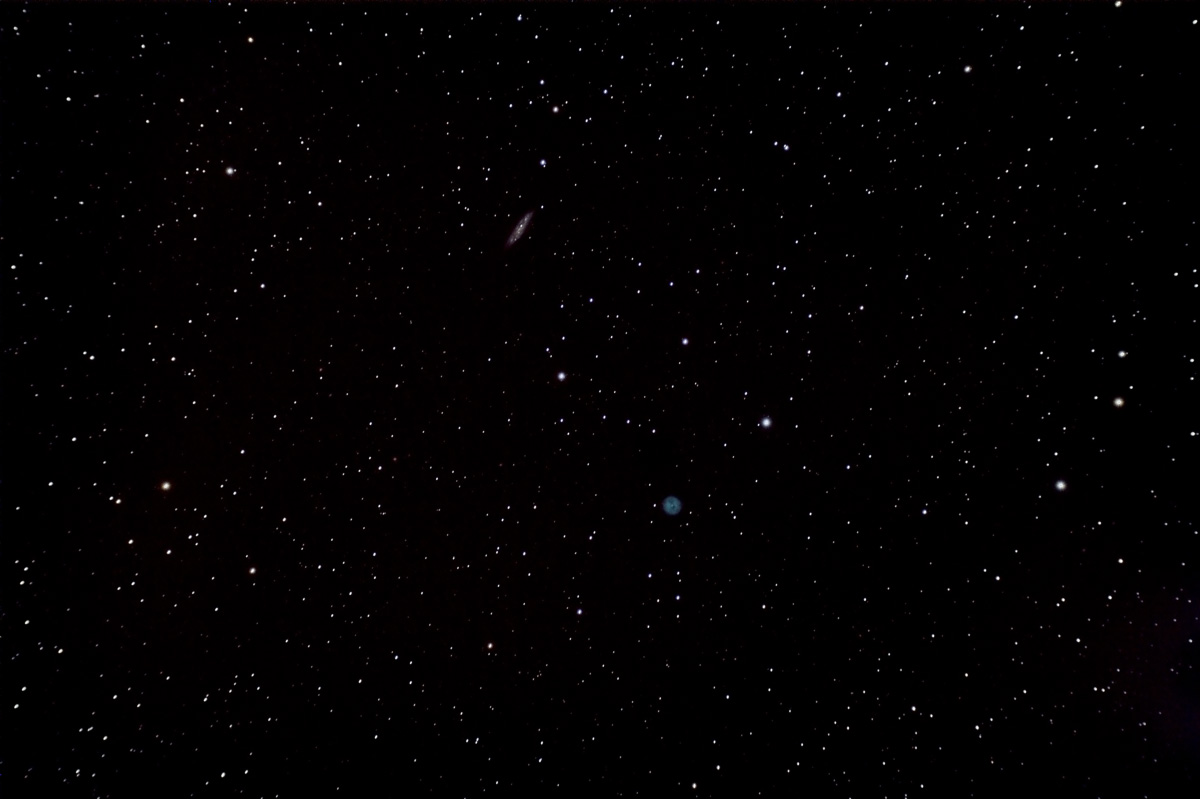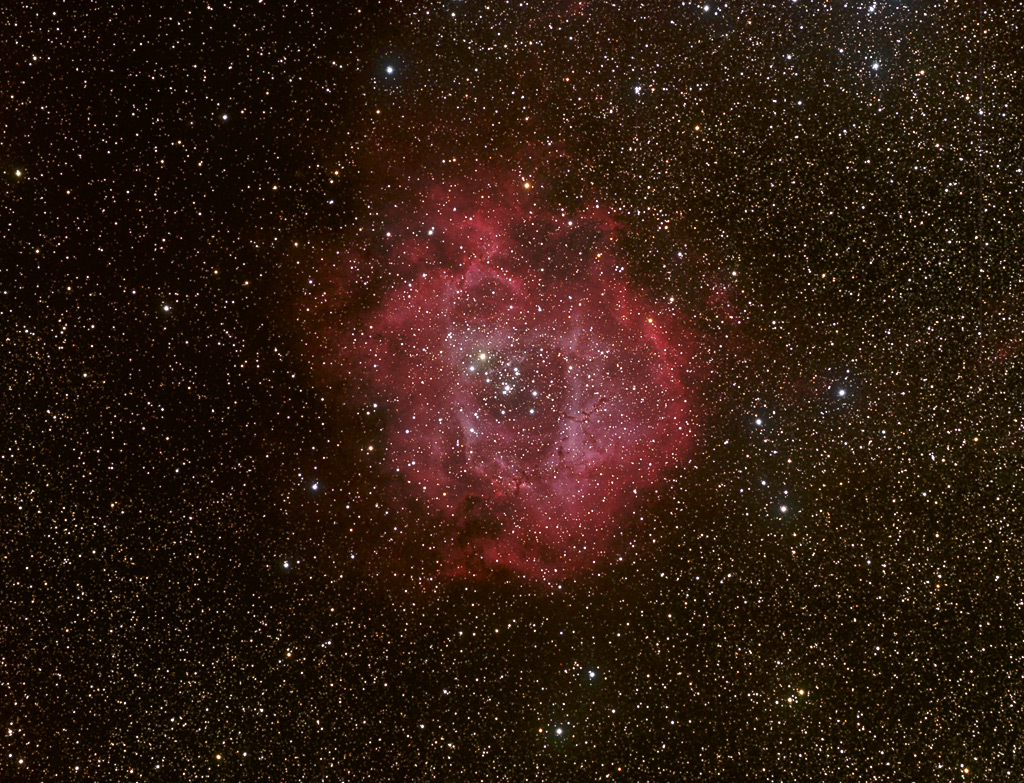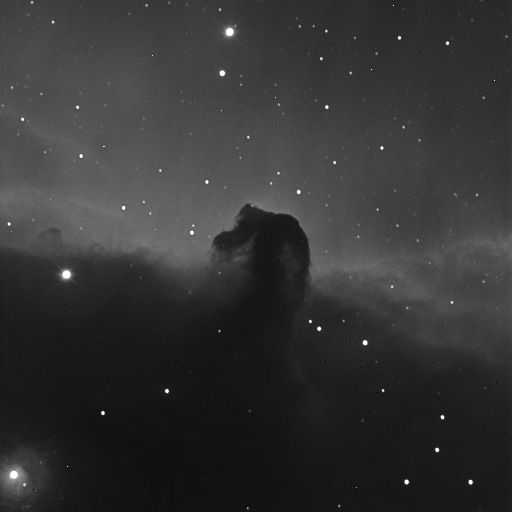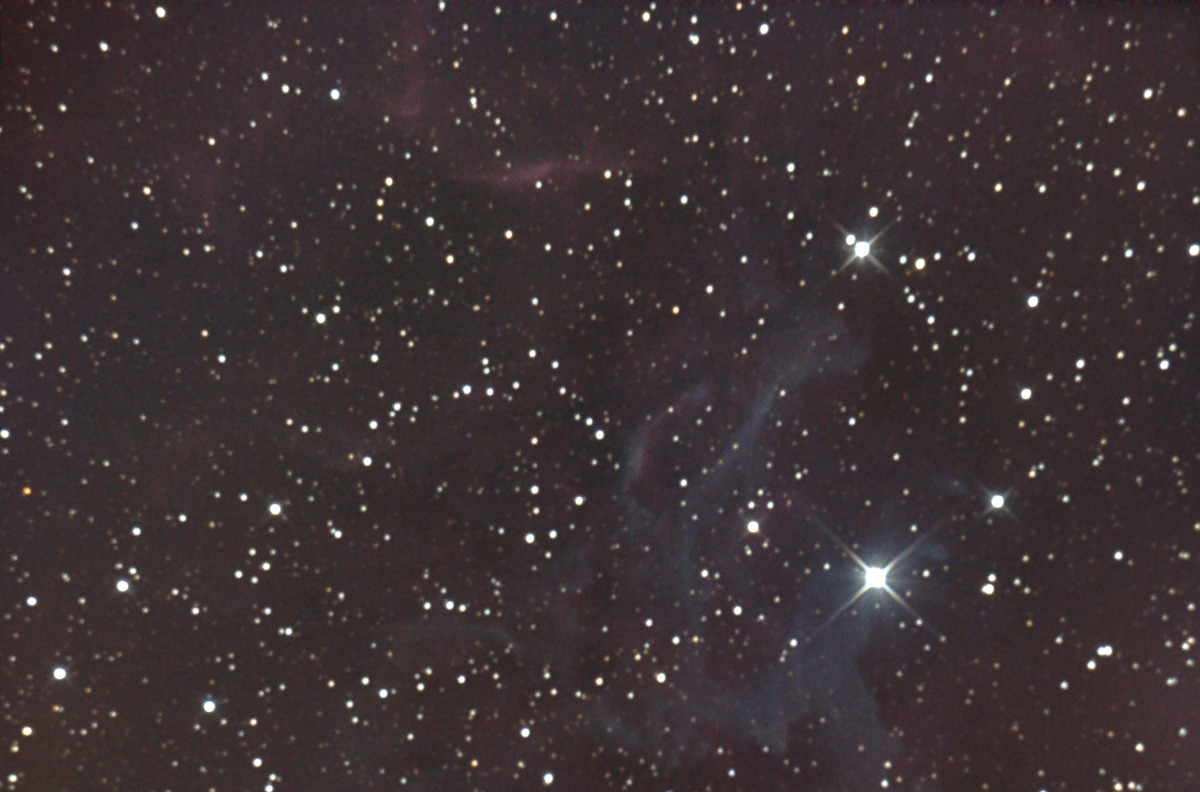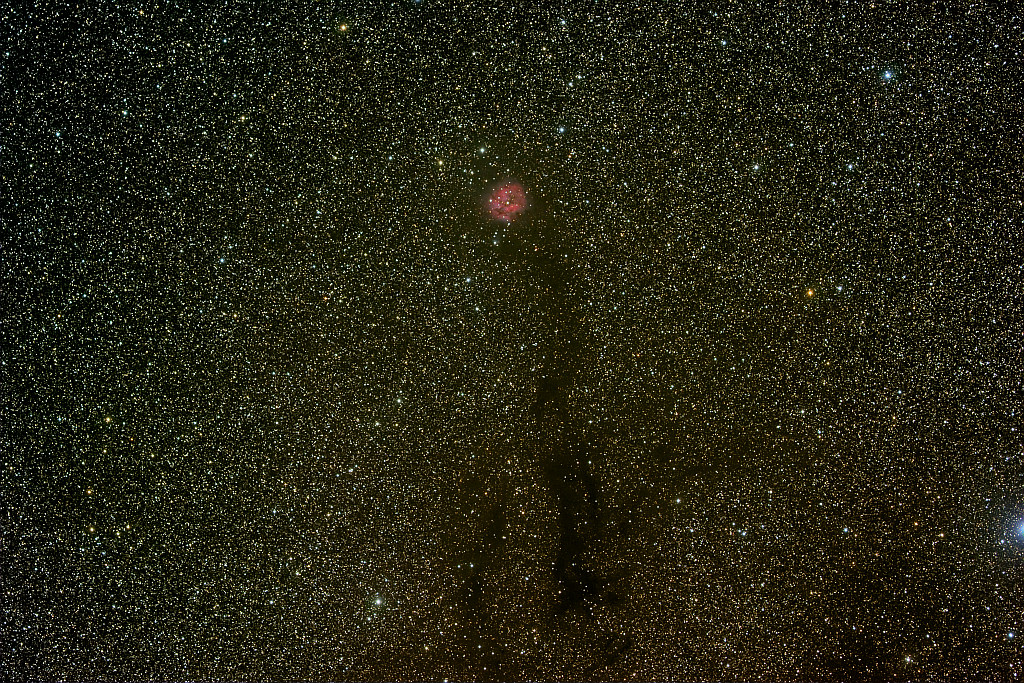Last night yielded a couple of clear spells without a moon in the sky, (the first for a while) and with the nights drawing in rather earlier as we approach autumn I made the most of the opportunity for a final run through of equipment and techniques before the Kelling Heath star party.
It was just as well that I did because I discovered that my T adapter for the Canon had worked loose and needed a tweak with a screwdriver. The weather has been so bad this summer that I’ve barely had the telescope out since the La Palma trip.
M52 is an easy target to find and with the Zenithstar, if you’ve got it in the middle of the frame then you’ll also capture the Bubble nebula as well. After a short interlude waiting for cloud to clear, I took 5 3 minute exposures at ISO 800 with the unmodified Canon 350D.

